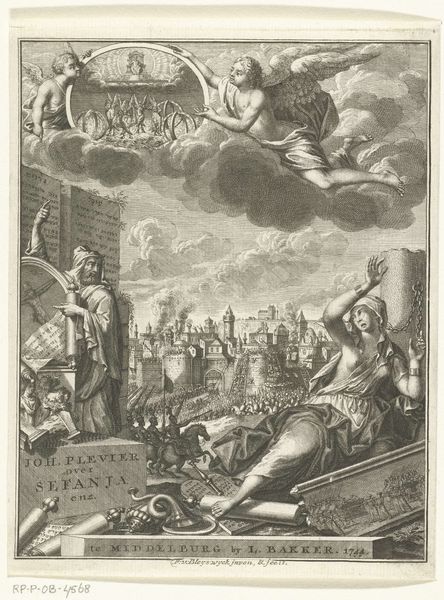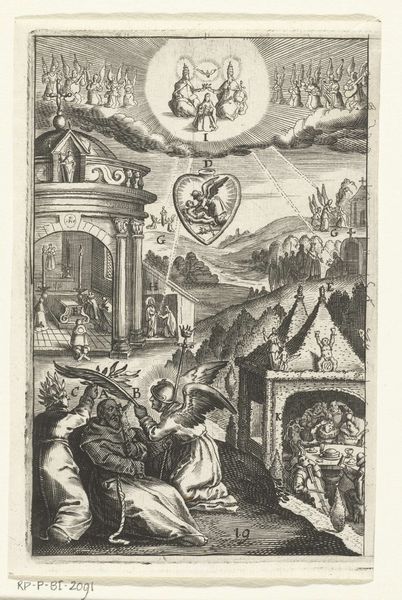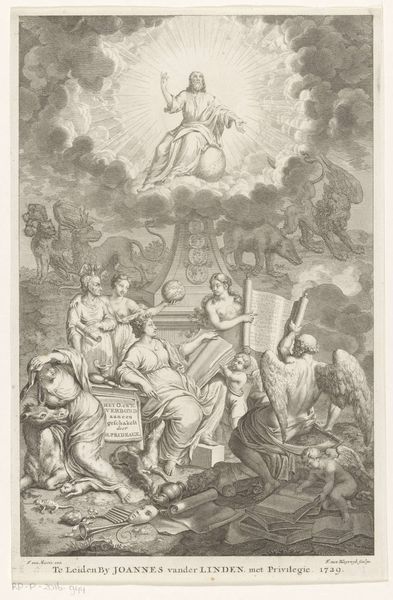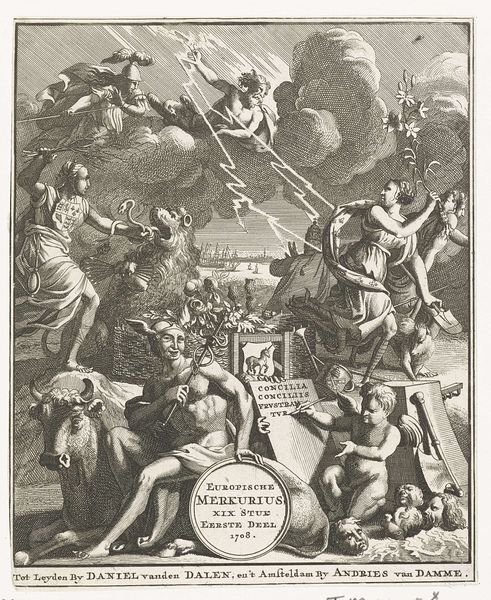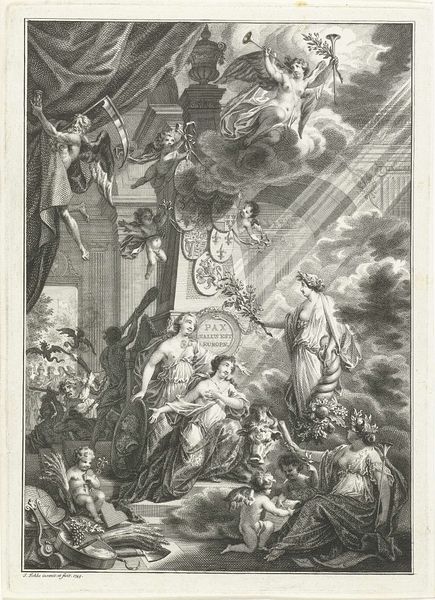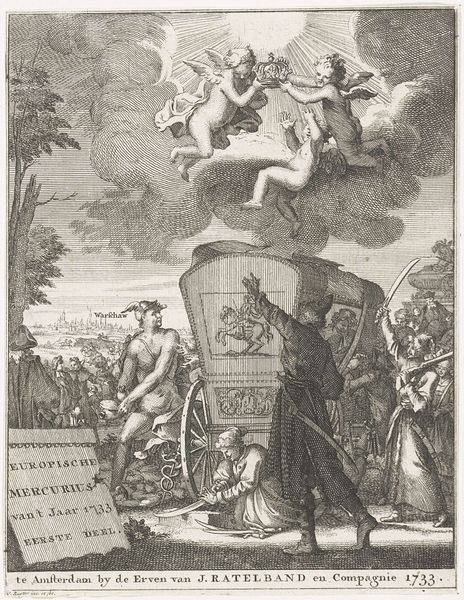
print, engraving
#
allegory
#
baroque
# print
#
book
#
history-painting
#
engraving
Dimensions: height 196 mm, width 146 mm
Copyright: Rijks Museum: Open Domain
Editor: Here we have François van Bleyswijck's engraving, "Engel toont profeet Jesaja zijn profetieën," dating sometime between 1681 and 1739. The cascading composition strikes me as dramatic, but the real narrative feels locked away in symbolism. What do you see in this piece, from your perspective? Curator: It's a fascinating piece, isn't it? The dramatic composition isn’t just aesthetic; it's functional. Note how Isaiah shrinks beneath the angels bearing visions in celestial spheres. Consider what it means for prophecies to be presented as images held by angels – are these prophecies somehow separate from Isaiah, mediated through divine beings, objectified? And notice the angel pointing toward those future visions. It evokes a journey through time, shaped by cultural memory. Editor: That’s interesting - objectified prophecies. The use of spheres feels significant too; almost like viewing different worlds. Is the angel pointing acting as an interpreter, clarifying that prophetic trajectory? Curator: Precisely. That gesture serves to solidify Isaiah's role not just as a prophet, but as a witness – a passive receiver of history yet to unfold. This active gesture redirects Isaiah’s gaze, solidifying his transition from mere mortal to vehicle for divine foresight. These are all important reminders of the psychological weight tied to the interpretation of prophecy within this historical context. Editor: So the imagery underscores a sense of divine control and perhaps a burden on the prophet, presented with an inevitable future. It definitely enriches my understanding of Baroque art! Curator: Indeed. It is how these symbols work over time; bearing and shaping beliefs, memories, and even fears. That transfer is a complex tapestry that continues to intrigue.
Comments
No comments
Be the first to comment and join the conversation on the ultimate creative platform.
